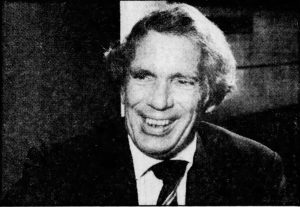
(Dec. 12, 1924-May 27, 1997). Calvin Sargent Hamilton was born in Lakeland, Florida to Ralph and Francelia Hamilton. By 1930, he and his parents had moved to Indianapolis, where his father worked in the insurance industry. He graduated in 1941 from and entered the military during World War II. After military service, he earned a BFA in landscape architecture in 1949 from the University of Illinois and a Master of City Planning degree in 1952 from Harvard. Advanced study at the University of London followed.
In 1955, 30-year-old Calvin Hamilton was selected as the first director of the Indianapolis/Marion County Metropolitan Plan Commission (forerunner of the ). The Indiana General Assembly created this agency to be responsible for planning and zoning in both Indianapolis and its surrounding county. He led the new agency with energy and flair. Hamilton dealt with the configuration of the Interstate System, excessive reliance on variances, urban sprawl, and decline in inner-and mid-city areas. He guided the preparation of a future-oriented downtown plan that stimulated interest in center city development. He also led the preparation and oversaw the adoption of a Comprehensive Plan, a Subdivision Control Ordinance, a Thoroughfare Plan, and segments of a new countywide zoning ordinance.
In 1961, Hamilton became director of the Pittsburgh City Planning Department and later led municipal planning efforts in Los Angeles (1964-1985). He also carried out private client planning work in the U.S. and abroad.
He received praise for his long-range conceptual planning ability. Even so, the General Plan prepared while Hamilton was director of Los Angeles had only mixed success. While embracing the established “horizontal city” development pattern, it attempted to concentrate commercial and apartment development in centers around the city that would be linked by transit. The “centers concept” was controversial and was only partially implemented.
Throughout his lengthy career, Hamilton demonstrated ability to meet community needs with innovative planning solutions. He was adept in stimulating interest in planning by members of the public and believed and acted on the premise that the participation of citizens in planning processes was vitally important.

Help improve this entry
Contribute information, offer corrections, suggest images.
You can also recommend new entries related to this topic.